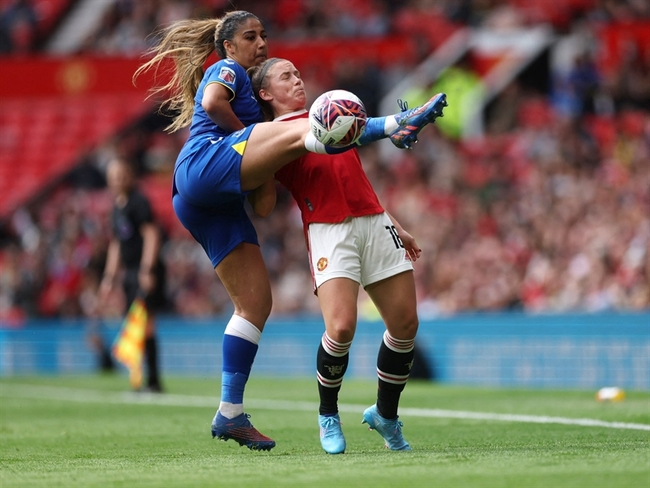Rugby’s effect on spine health

Athletes who play rugby, especially at an elite level, are at greater risk of all types of musculoskeletal injuries(1). These injuries often lead to pain or dysfunction long after the games are over, especially in retired players over 50 years old. Osteoarthritis (OA) is a common complaint, and often the onset of pain from OA begins earlier in this population.
Back pain in former and current rugby players is a frequent ailment. Up to 40% of high school players and 39% of retired professional players report suffering from back pain, often without visible abnormalities on X-ray(2). However, researchers in the UK wondered if a more careful examination of rugby player’s vertebral spines using dual energy X-ray absorptiometry (DXA) might reveal more structural deformities of the vertebrae or their joints than the typical population.
The DXA scan assesses bone health, specifically measuring bone mineral density (BMD). A lower BMD means the athlete is at a higher risk of fracture. The sites of measurement include the lumbar spine and the hip/femoral neck. Previous surveys of BMD in rugby players found a higher BMD than the typical population. However, pathologies such as fracture, OA, and other vertebral abnormalities can falsely increase the BMD reading. The UK researchers also wondered if excluding the vertebrae with these abnormalities would affect the BMD readings in rugby players.
The researchers enrolled 138 men from the UK Rugby Health Project, including 87 former rugby players and 51 non-rugby but competitive but non-contact athletes in the study. Each subject underwent a DXA scan of their lumbar spine and hip. The scientists calculated measures of BMD (T-scores in those over 50 years old and Z-scores in those younger than 50) in all participants. Then, they excluded those vertebrae with abnormalities (n=122) and recalculated the scores. Seventy-nine of the abnormal vertebrae were present in retired rugby players and 43 in non-rugby athletes. Removing the problematic vertebrae significantly reduced the BMD score in rugby and non-rugby players of all ages. Doing so also revealed two instances of low BMD that would have gone undetected.
Practical implications
The careful examination of vertebral status using DXA scans in rugby players revealed many abnormalities that were so significant that 12 of the scans were not usable for measuring BMD. As suspected, these abnormalities and resultant unusable scans (10 of the 12) were more numerous in the retired rugby players over 50 years old. The presence of these vertebral variances, mostly OA, falsely increases the measures of BMD. Removing them from the calculations results in significantly lower scores, especially in the older population.Various musculoskeletal injuries cause the high prevalence of back pain among current and retired rugby players. Soft tissue is often cited as the culprit in these instances. However, clinicians must consider the bone health of such athletes, including the early onset of OA in the spine. Additionally, athletes over 50 may have more bone loss than previously thought and osteopenia may be present despite a seemingly normal DXA scan.
References
- J Clin Densitom. 2021 Jan 28;S1094-6950(21)00009-3
- J Athl Train(2020) 55 (10): 1116–1123.
You need to be logged in to continue reading.
Please register for limited access or take a 30-day risk-free trial of Sports Injury Bulletin to experience the full benefits of a subscription. TAKE A RISK-FREE TRIAL
TAKE A RISK-FREE TRIAL
Newsletter Sign Up
Subscriber Testimonials
Dr. Alexandra Fandetti-Robin, Back & Body Chiropractic
Elspeth Cowell MSCh DpodM SRCh HCPC reg
William Hunter, Nuffield Health
Newsletter Sign Up
Coaches Testimonials
Dr. Alexandra Fandetti-Robin, Back & Body Chiropractic
Elspeth Cowell MSCh DpodM SRCh HCPC reg
William Hunter, Nuffield Health
Be at the leading edge of sports injury management
Our international team of qualified experts (see above) spend hours poring over scores of technical journals and medical papers that even the most interested professionals don't have time to read.
For 17 years, we've helped hard-working physiotherapists and sports professionals like you, overwhelmed by the vast amount of new research, bring science to their treatment. Sports Injury Bulletin is the ideal resource for practitioners too busy to cull through all the monthly journals to find meaningful and applicable studies.
*includes 3 coaching manuals
Get Inspired
All the latest techniques and approaches
Sports Injury Bulletin brings together a worldwide panel of experts – including physiotherapists, doctors, researchers and sports scientists. Together we deliver everything you need to help your clients avoid – or recover as quickly as possible from – injuries.
We strip away the scientific jargon and deliver you easy-to-follow training exercises, nutrition tips, psychological strategies and recovery programmes and exercises in plain English.










